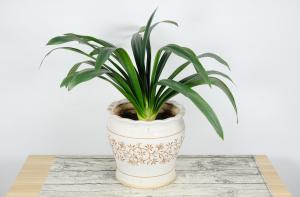How to Avoid Leggy Tomato Plants
Tomatoes are an essential part of many gardens, but it can be frustrating to see tall, spindly, and leggy plants that do not produce many fruits. Leggy tomato plants are a common issue, but there are several ways to avoid them. In this article, we will discuss the causes of leggy tomato plants and provide tips on how to prevent them.
1. Start with Quality Seeds
The quality of your tomato seeds plays a significant role in determining whether you will have leggy plants or not. Choose high-quality seeds that will produce low-to-medium-height, bushy plants. Look for seeds that are labeled as determinate or semi-determinate, which means that they will mature at a specific height and produce most of their fruits at once.
2. Provide Adequate Light
Tomato plants require a minimum of 6-8 hours of direct sunlight every day to grow healthy and strong. If they do not receive enough light, they will start stretching to reach for it, resulting in leggy plants. To avoid this, plant your tomatoes in a location with plenty of sunlight throughout the day or provide artificial light if growing indoors.
3. Keep Soil Moist But Not Wet
Overwatering your tomato plants can lead to waterlogged soil, which can increase the risk of root rot and create an environment where leggy plants thrive. On the other hand, underwatering can cause the plant to wilt, leading to stunted growth. Water your tomato plants regularly and ensure that the soil remains moist but not waterlogged.
4. Properly Space Your Tomato Plants
Tomato plants need sufficient space to grow and develop healthy root systems. Plant them at least 24-36 inches apart to avoid overcrowding, which can lead to competition for water and nutrients, resulting in leggy plants. Adequate spacing also allows for adequate airflow, which helps prevent fungal diseases.
5. Provide Adequate Nutrients
Tomato plants require adequate nutrients to grow strong and healthy. Use high-quality compost or fertilizer to provide the nutrients needed for optimum growth. However, it is essential not to over-fertilize as this can lead to excessive leaf growth and leggy plants. Follow the instructions on the fertilizer package carefully.
6. Prune Your Tomato Plants
Pruning your tomato plants can help to control their growth and prevent legginess. Remove the suckers that develop in the crotch of the main stem and the branches to promote strong, bushy growth. Pruning also helps to increase airflow and light penetration, which assists with fruit formation.
Conclusion
Leggy tomato plants are a common issue, but they are preventable by following these tips. Starting with quality seeds, providing adequate light, keeping the soil moist but not wet, properly spacing plants, providing adequate nutrients, and pruning regularly can all help to prevent leggy tomato plants. Happy Gardening!

 how many times do yo...
how many times do yo... how many planted tre...
how many planted tre... how many pine trees ...
how many pine trees ... how many pecan trees...
how many pecan trees... how many plants comp...
how many plants comp... how many plants can ...
how many plants can ... how many plants and ...
how many plants and ... how many pepper plan...
how many pepper plan...































